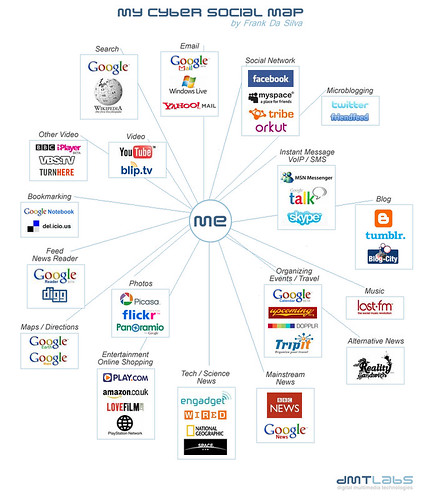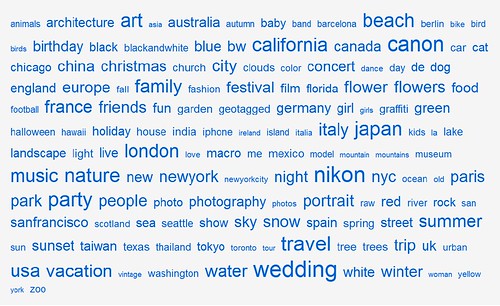Introduction
The World Wide Web has been transformed over the past two decades from an emergent environment mimicking print-based non-digital predecessors, to a living, breathing, evolving global community in which the distinction between author and audience is progressively less and less important. The Web has given way to Web 2.0, characterized by production and sharing of microcontent, small chunks of information in video, photo, graphic, or text formats which can be easily shared, combined, and re-combined with other content, and in other places. Yet as this revolution takes shape, classrooms often lie unresponsive to the shift towards collaborative, self-published, free-for-reuse content. Authors like Bryan Alexander (2006, 2008) and Terry Anderson (2008) identify some of the educationally valuable characteristics of Web 2.0, but as with many teachers and administrators, cannot agree on how to bring the valuable tools of the Internet into the classroom itself.
Web 2.0 and folksonomies
To begin with, how and when did the shift from the earlier iteration of the Web occur? According to Alexander’s 2006 article entitled Web 2.0: A new wave of innovation for teaching and learning? however, the modern Web is “emergent and historical, not a brand-new thing” (p.36). Nonetheless, it represents a radically different way of thinking, a remediation of printed materials, rather than an imitation of them, vis a vis Web 1.0.
The Internet is no longer a static repository for digital versions of print media. Now music, text, graphics, and videos can be copied, multiplied, modified, transferred and transformed at will, and with very little technical prowess. But if the bar for content production has indeed become “drastically lower” (Alexander & Levine, 2008, p. 42) and billions of users are now producing and remixing content online, shouldn’t the great Internet experiment have descended into utter, inescapable chaos by now? The answer, thankfully, is no. Instead, with the help of social media and innovative designers, the Web 2.0 population employs folksonomies, socially-generated organizational structures.

As small chunks of information (tweets, photos, videos, podcasts, blog posts, etc.) are produced and shared, Internet users themselves have adopted a labeling system called “tagging” as a way to categorize and define ideas and connect with others online. They employ the suggestions of social bookmarking sites like Delicious, bloggers from all over the world, and other users, most notably in the explosion of the micro-blogging site Twitter, where users label their posts by adding a “hashtag” and a word or phrase, while being able to view the “trending” topics on Twitter at the same time and adopt popular tags if they desire to join a particular conversation or movement in the “Twitterverse.”

Digital Storytelling
One exceptionally varied niche in Web 2.0 culture is described by Alexander and Levine (2008), who extol the virtues of digital storytelling “using Web 2.0 tools, technologies, and strategies,” and explain how it differs from traditional storytelling (p.42). Unlike stories found in books and magazines, digital stories are designed to be interacted with, shared, and remixed. And that combination of the growing range of digital tools for production, consumption, and editing of diverse media with personal stories is an “energizing and powerful form of expression for both the creator and the audience” (Alexander & Levine, 2008, p. 46).
Digital storytelling allows the user/reader to make up their own mind about the story and characters. Lines between reality and fiction may be blurred or irrelevant, and importantly, “at any time, the audience can go out of bounds of the story to research information,” or create the story themselves based on hints or glimpses of the author’s intention (Alexander & Levine, 2008, p.47). This freedom manifests in a number of storytelling and social media sharing tools online. Alexander & Levine (2008) describe one possiblity for Web 2.0 storytelling as “instead of telling a story, we would present the evidence of that story, and let the players tell it themselves” (p.51). They reference the example I Found a Digital Camera in the Woods (The original has been removed, but a Youtube version still exists), but others even more overtly invite authors to create and re-create stories to their own liking. Notably, the website Storybird has a large library of illustrations, to which authors can freely add text to create their own narratives, poems, or reflections. This collaboration between authors who may or may not even know each other’s names is a hallmark of Web 2.0 content generation.
Applications for Education
To be familiar with Web 2.0 and its tools is a start, but how do we come to employ them in practical, effective, real-life teaching practice? In their co-written EDUCAUSE Review article from 2008, Alexander and Levine conclude by saying that “for now, perhaps the best approach for educators is simply to give Web 2.0 Storytelling a try and see what happens,” (p.56), while in the same year author Terry Anderson (2008) calls for a more measured approach to implementing digital tools in the classroom, suggesting that online learning requires its own theoretical framework. He argues that “theory allows and even forces us to see the big picture” and “to transfer experience gained in one context to new experiences and contexts” (Anderson, 2008, p. 45). His approach to implementing Web tools in the classroom is characterized by the need to “choose, adapt, perfect, through feedback, assessment, and reflection, educational activities that maximize the affordances of the Web,” an approach designed to “measure the direction and magnitude of the effect of each variable on relevant outcome variables, including learning, cost, completion, and satisfaction” (Anderson, 2008, 68).
Few would dare argue that the Internet and its wide-ranging tools for collaboration, communication, and self-expression should be cordoned off from formal education environments, but unless we examine the benefits of these tools in terms of the overall benefit for learning and achievement of desired outcomes prior to embarking on a Web 2.0 adventure, we may miss the opportunity being presented to us altogether.
Resources
Alexander, B. (2006) Web 2.0: A new wave of innovation for teaching and learning? EDUCAUSE Review, 41(2), p. 34-44
Alexander, B. (2008). Web 2.0 and Emergent Multiliteracies, Theory Into Practice, 47 (2), p. 150-160
Alexander, B & Levine, A. (2008) Web 2.0 Storytelling: Emergence of a New Genre, EDUCAUSE Review, 43(6) p.41-56
Anderson, T. (2008). Towards a theory of online learning. In T. Anderson (Ed.), The theory and practice of online learning (2nd ed., pp. 45-74).



David,
I particularly liked the Cyber Social map. It is mind bobbling when you think of all the information that now comes to us via RSS feed, Twitter etc. I actually got anxious when I saw you map as it made me think of the feeds etc that I have not checked recently and wonder what I have missed. It is weaving and sifting through these that becomes the skill of the century.
Bridget